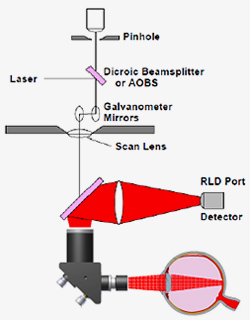Microscopy
Modern microscopy techniques are able to penetrate into tissue to provide depth sectioning and/or 3D information. Confocal Laser Scanning Microscopy (CLSM), Optical Coherence Tomography (OCT), and Two-Photon Microscopy (TPM) have been very useful for imaging the retina. There is interest in applying these techniques to brain imaging driven by the field of Optogenetics.





